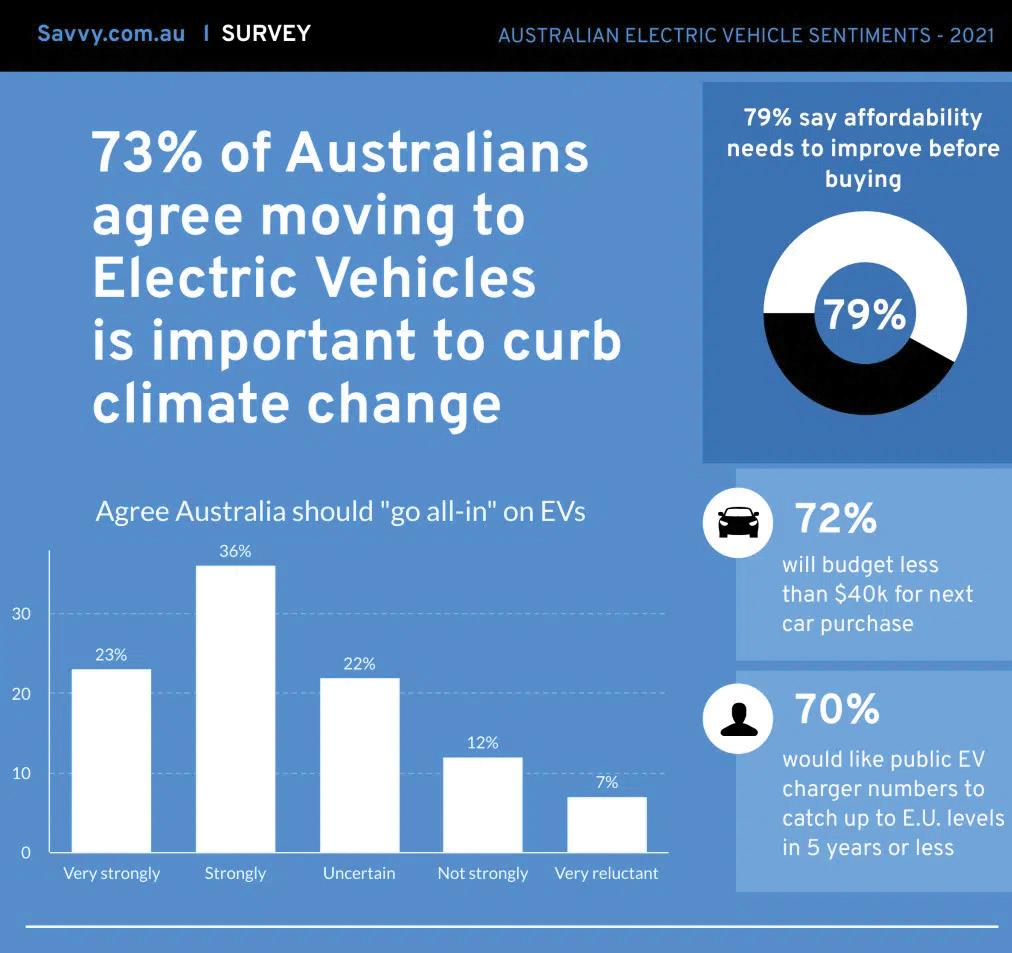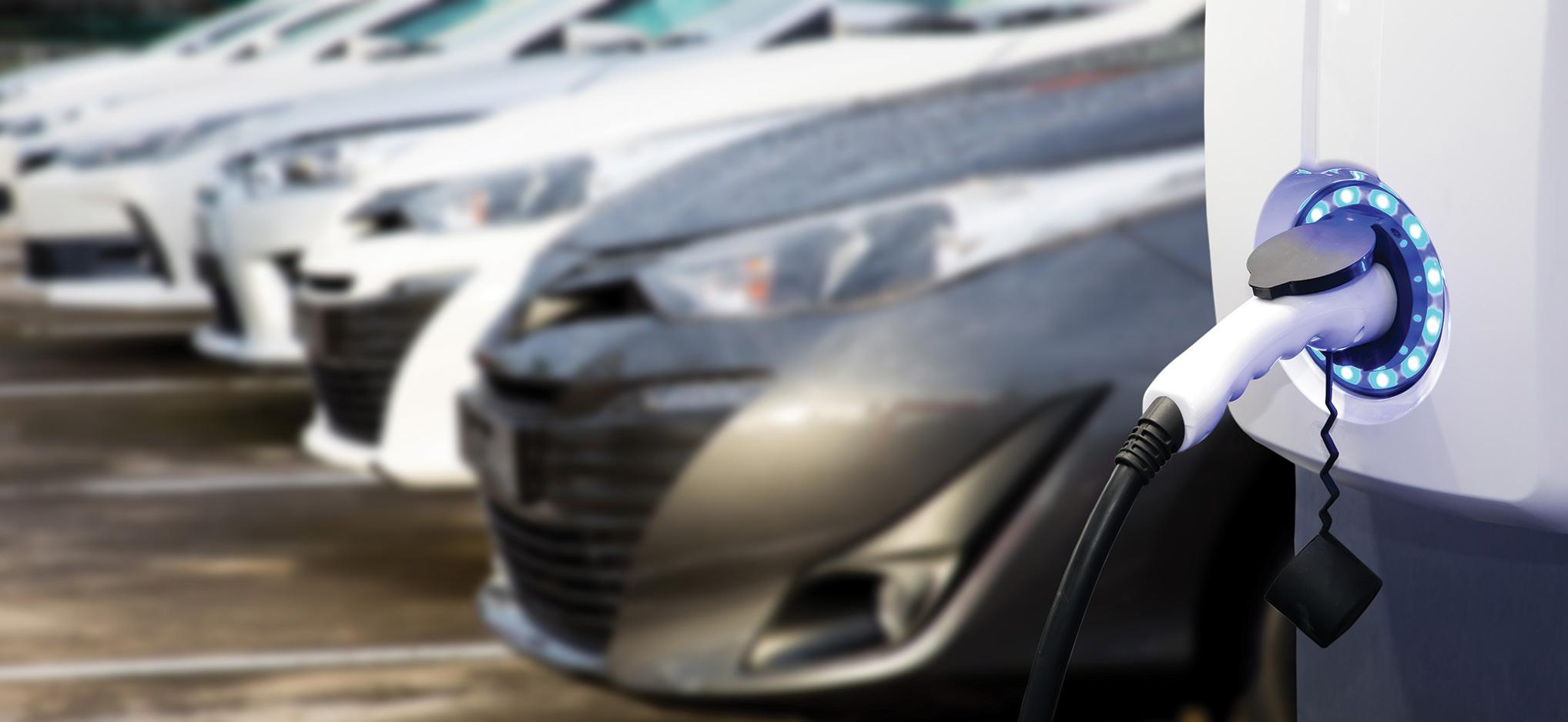
9 minute read
Automotive News
from VTE December 2021
by Possprint
Toyota wins the hybrid race in Australia
According to new research conducted by Carloop.com.au that analysed 50,000 hybrid car sales in Australia from 2019 to 2021, sales of the Toyota RAV4 hybrid electric/petrol vehicle increased by 39 percent year on year in 2021 compared with 2019 despite the global pandemic and semi-conductor shortage.
Toyota hybrids accounted for 92 percent of all analysed hybrid sales in Australia in 2021. This eclipsed the sales figures of the petrol variant – 4,626 petrol models vs. 8,211 hybrid models in 2020, followed by 3492 petrol vs 6791 hybrid models in 2021. While sales dipped in 2021, hybrid RAV4s as a percentage increased to 66%. The far and away leader in hybrid sales is Toyota, claiming 92 percent of the market, followed by Mitsubishi on 3 percent, Hyundai on 2 percent, and Subaru on 1 percent. Of the 46,282 vehicles sold by Toyota, Toyota Corolla hybrid sales totalled 28,220 (61%), RAV4s 17,094 (37%), while the Kluger hybrid sold 968 (2%). Not only has the RAV4 become the most popular SUV sold in Australia, but the Hybrid version became the most popular type of Rav4 sold in 2020 with the trend continuing into 2021 and projected to continue into 2022. Current Australian new car sales buck world trends. There is a current global new car sales slump of 14 percent, a US sales dip of 15.83 percent (2019 vs 2020) and UK sales contraction of 27 percent (2019 vs 2020.) By contrast, Australian car sales have surged 33 percent year on year (October 2020 to 2021) according to the Federal Chamber of Automotive Industries.
Chrysler leaves Australia, again
FCA Australia, a subsidiary of Stellantis, confirmed the departure of the Chrysler brand from Australia; this was the sole right-hand-drive market selling Chrysler vehicles.
The global push towards electrification and focus on SUVs has resulted in a consolidation of the overall product lineup in Australia. “Chrysler has held a special place in the heart of many Australians and we are proud of its history here,” Kevin Flynn, FCA Australia Managing Director, said. Chrysler Australia took over the Tonsley Park Assembly Plant in Adelaide in 1964 from the Rootes Group, it later became the Mitsubishi manufacturing plant in 1980. The 1970s saw the arrival of the highly respected Valiant Charger, which became Chrysler Australia’s “muscle car,” and is still considered one of the brand’s most collectable automobiles.
Some 50 years later, the legendary HEMI has continuously upped the ante in its latest 6.4litre V8 configuration it delivers 350kW and 637Nm of torque in the Chrysler 300 SRT. It’s a fitting way for the high-performance hero to bow out as Australia’s last affordable V8powered rear-wheel-drive sedan.The 300 SRT is offered alongside the Chrysler 300C Luxury. “We have a hugely positive year ahead of us, focusing on electrification and moving into a very premium offering with our all-new, two and three-row Jeep Grand Cherokee as well as the PHEV Jeep Grand Cherokee 4xe. These models represent real advancements in terms of technology, luxury, efficiency and capability,” Mr Flynn said.
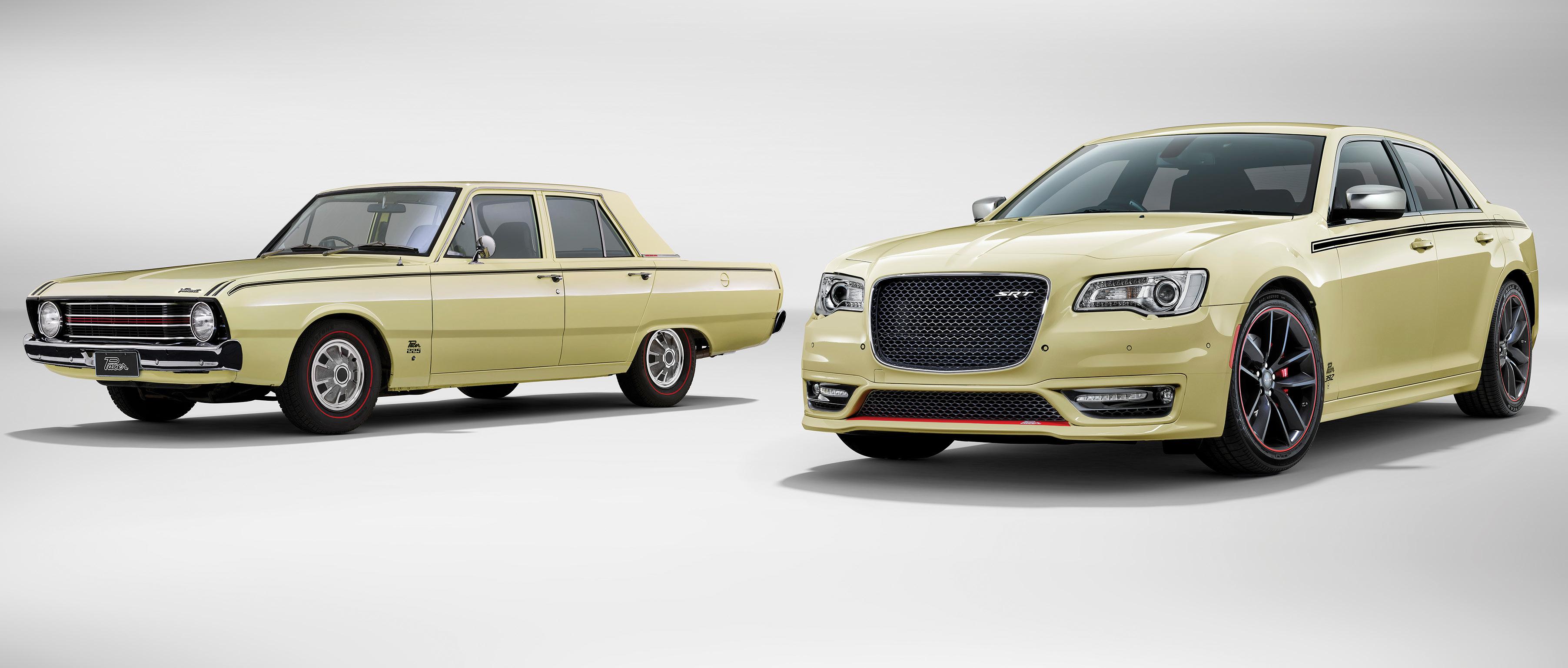
Australian AppliedEV partners-up overseas
Melbourne based AppliedEV (AEV) and Germany’s IBEO a specialist in LiDAR sensors and related systems are collaborating on work with AEV’s Blanc Robot platform. AEV is also partnering with the UK’s Oxbotica.
IBEO
The platform provides all the functions for fully bi-directional operation as it is a modular platform that uses variable superstructures known as pods to allow for a wide range of applications such as an automated goods transporter in parcel delivery. “As part of our cooperation with AppliedEV, we will be able to demonstrate the universal suitability of our completely new solid state LiDAR sensor ibeoNEXT and the autonomous driving system based on it outside the passenger car sector,” Dr Ulrich Lages, CEO of Ibeo said. “There is huge potential here in the market for on demand, door-to-door and last-mile transportation solutions, which are an equally important part of the new mobility alongside passenger transportation. So, we are tapping into a new market for us through this collaboration. The joint development process will also provide both partners with important insights and possible solutions for the mobility of the future,” The cooperation initially focuses on the integration of Ibeo’s autonomous driving system with the Applied EV Blanc Robot platform. “In order to create added value for joint customers at an early stage, we have been working closely together for around a year to further develop our technologies,” Dr Lages said. The primary goal is to prepare products for the market that can be operated without monitoring for applications in intralogistics that can be implemented comparatively quickly. After that, the technology is to be further developed for other, more complex applications such as individual mobility in smart cities. Ibeo will supply the complete technology based on the ibeoNEXT LiDAR sensors, including perception system and driving system. The sensors used are based on new photon laser measurement technology. As so-called real solid-state sensors, they manage completely without moving parts. The ibeoNEXT LiDAR sensors are suitable for automotive series production of driver assistance systems, active safety systems and also for automated driving functions. Although the platform is initially to be used in a controlled environment – for example, in industrial logistics – a later use in road traffic is also planned. The first practical tests with selected application partners will commence in early 2022.
Oxbotica
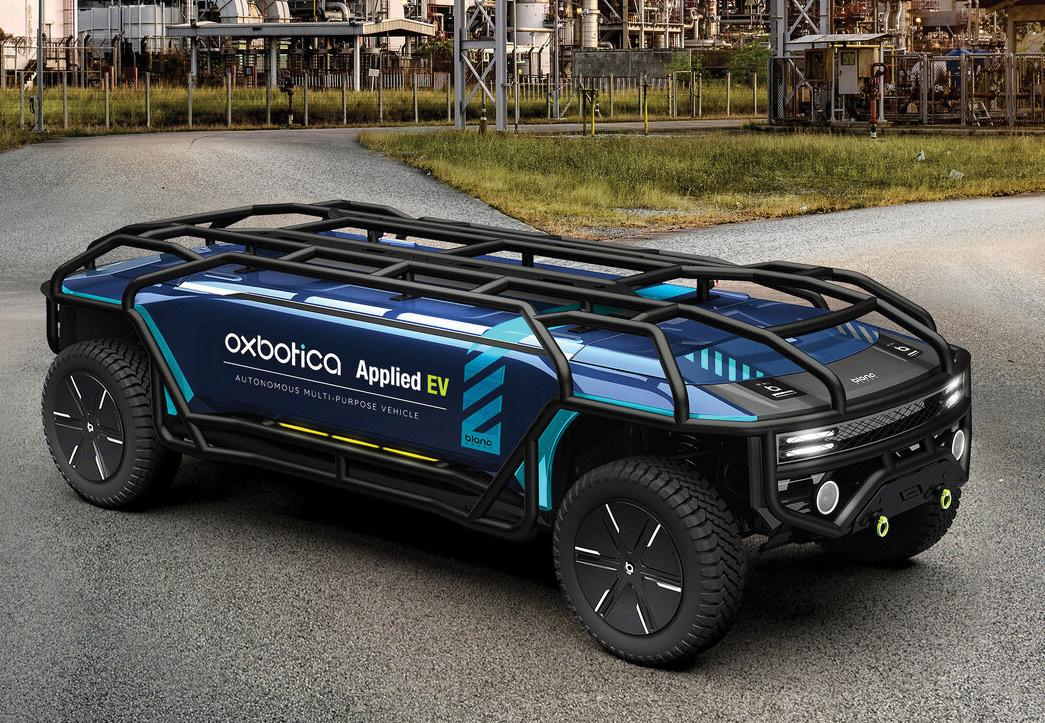
AppliedEV also announced a collaboration with Oxbotica in the development of a fully autonomous, multi-purpose vehicle capable of being deployed in a wide range of environments, for a variety of commercial applications. The project will see Oxbotica integrate its autonomous vehicle software with AppliedEV’s programmable and configurable EV platform. The vehicle will be driverless, marking a giant step on the journey towards commercial autonomy. Industrial logistics and goods delivery will be the first industries targeted for deployment, with continued growth expected in further industries as the number of vehicles rises. “Oxbotica and AEV both see an opportunity in the market to come together with a unique offering of strong commercial outcomes as early as 12 months,” Julian Broadbent, Founder and CEO of AppliedEV, said. Paul Newman, Founder & CTO of Oxbotica, said that in collaboration with AppliedEV they will provide the market with an autonomy solution comprising both hardware and software. AEV offers the Blanc Robot all-wheel-drive in either an off-road or on-road spec. Battery size is matched to the duty and charge cycles, total efficiency is up to 10 kWh/100mi..
High power EV charger testing facility Queensland
Tritium, an electrical and electronic manufacturer, has opened a new EV charger testing facility in Brisbane, containing one of the world’s largest and highest-powered electromagnetic compatibility (EMC) testing chambers.
The facility features one of the highestpower commercially accessible EMC testing chambers in the world. The facility is designed to deliver up to 720kW of regenerative power from its integrated system with fully integrated AC and DC power feeds, ensuring Tritium can test devices that demand very high-power levels to Federal Communications Commission (FCC) and International Electrotechnical Commission (IEC) certification requirements. The custom-designed chamber features a five-metre turntable with highpower connections, enabling Tritium to test a full high-powered charging system, consisting of the charger itself and an accompanying power cabinet.
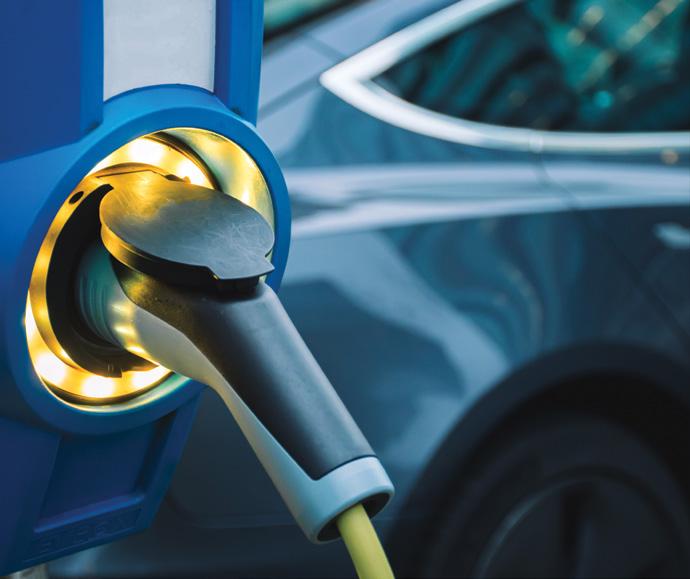
The Grattan car plan
Late this year Australian research company The Grattan Institute released a document titled The Grattan Car Plan: practical policies for cleaner transport and better cities which is available for download.
The focus of the document is a discussion on working towards lower or even zero emissions. The institute says that political parties are split between those wanting everyone in electric vehicles, preferably yesterday, and those worrying that pushing drivers into electric vehicles is a recipe for more expensive cars, charging anxiety, and – worst of all – tradies losing their utes. According to this document there is a proven way to reduce carbon emissions and unhealthy pollutants, without dictating to anybody what car they can drive.
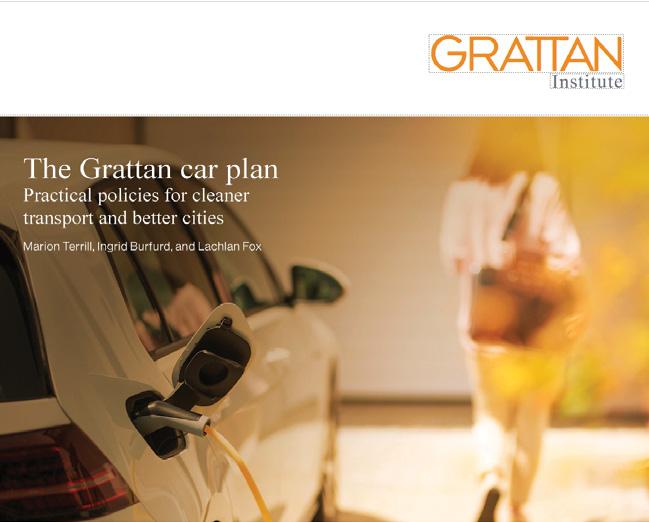
Australia should adopt an emissions standard, or ceiling, for new light vehicles, applied across the offering of each manufacturer, just like 80 percent of the rest of the world does. The ceiling should be gradually lowered to zero emissions by 2035. The document states that we would get a better range of low-emissions cars to choose from – even more so if we also insisted on cleaner petrol for cars with internal combustion engines. The document offers a number of valuable insights and options to start discussions on how Australia and its vehicle cohort may be influenced towards more environmentally friendly solutions. It also covers adoption of overseas developments and how they can be applied here, charging infrastructure not only on road but in-house or in-garage charging and what the Federal Government could do to assist.
To download visit https://grattan.edu.au/ report/grattan-car-plan/
How Australians feel about moving to EVs
A survey of 1001 Australians by Savvy has revealed that 73 percent agree that moving to Electric Vehicles (EV) is an important move to reduce CO2 emissions and keep global temperature rises to 1.5°C with 79 percent of 18–24-year-olds, 78 percent of 25-34 year-olds, and 82 percent of 35-44 year-olds agreeing with the statement.
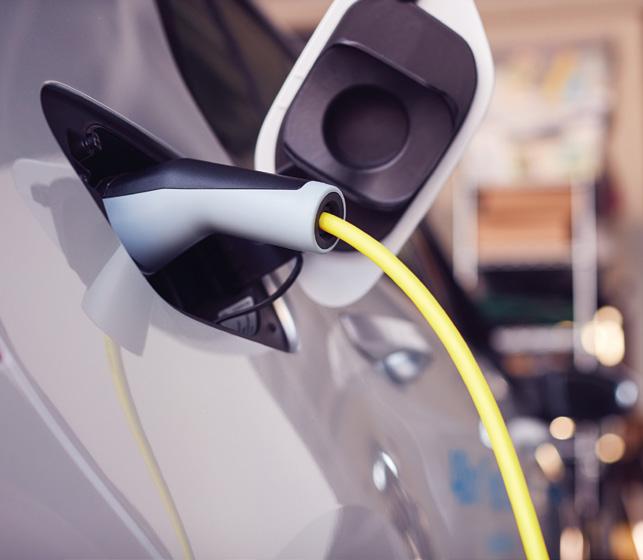
As for putting their money towards the cause, 40 percent stated that they may purchase EVs in the future, with 7 percent of respondents saying they intend to buy one within the next 12 months. Two percent said they already own an EV; however, 30 percent say they can’t afford one, with 37 percent of women saying they can’t afford an EV. Older Australians (33 percent for 55-64s and 36 percent for 65+) also say they are unable to afford one, with 19 percent of 65+s saying they’d rather buy a petrol-driven car. The biggest obstacle to going electric is price, according to the survey and 79 percent say that affordability would need to improve before considering an EV as their next vehicle. Improved government subsidies (41 percent), improved infrastructure (51 percent) and improved driving range (39 percent) would also influence their decisions, when asked their top three barriers to buying EVs. The biggest concern about buying is price – 43 percent say the price is too high; while 17 percent are most concerned about charging station availability and 16 percent worry about limited travel range. As for brands, 24 percent said they’d rather a Hyundai, followed by Tesla (20 percent) and Mazda (12 percent). With 37 percent of respondents saying they’d spend $25,000-$40,000 on their next car, most models would be well out of their price range. But 53 percent said they’d buy an EV over a petrol car to reduce emissions, even if they cost more than a petrol equivalent. “There is a taste for EVs in Australia, but I wouldn’t say that it’s what everyone is clamouring for just yet,” said Savvy Managing Director Bill Tsouvalas. “We need an economy of scale and infrastructure before we hit anything nearing critical mass. But there are shoots rising out of the ground, and that’s a good start.” Of those surveyed 59 percent said they felt strongly that Australia should go “all in” on electric uptake – that means aggressively pursuing subsidies, stronger emissions standards, and buyer incentives. However, only 8 percent said that the Federal Government’s $250 million Future Fuels and Vehicles Strategy, which is targeted at increasing EV home charging stations to 50,000 around the country, will “get the job done.”
